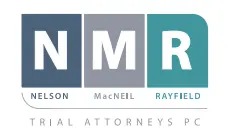After every motor vehicle accident, it is important to determine who is responsible for causing the crash. This liability determination can profoundly affect whether those who are injured in the crash will be fully compensated for the economic and non-economic damages they incur.
In some cases, liability is clear and little investigation is required. In fact, sometimes the driver who caused the crash admits liability. In other cases, determining liability can be more difficult. This can be especially true when multiple vehicles are involved in the accident.
In this article, we will discuss how fault is determined in a multi-vehicle accident.
Extreme Examples of Multi-Vehicle Accidents
Some types of car and semi-truck accidents are more common than others. For example, lots of us have witnessed (or even been involved in) an accident where one vehicle doesn’t stop in time and strikes another vehicle from behind. Another common type of accident occurs when one vehicle improperly enters an intersection by running a red light or stop sign.
While these common examples often involve only two cars, on occasion, a chain reaction causes multiple vehicles to be involved. Here are two extreme examples, each involving dozens of vehicles:
- California 1991: In 1991, an accident occurred on I-5 in California that involved 93 vehicles, including 11 tractor-trailer trucks. The carnage covered five miles of interstate and resulted in 17 deaths and 150 injuries.
- North Carolina 2016: In 2016, an accident occurred on I-40 in North Carolina involving more than 130 vehicles. While injuries resulted, luckily no fatalities occurred. Law enforcement officers noted the presence of rain and fog and that people were driving too fast for conditions.
Multi-Vehicle Accidents Occur Often in Oregon
While an accident involving two cars could be labeled as a “multi-vehicle” accident, we’re really talking about crashes involving three or more vehicles. And make no mistake – they do occur in Oregon, and they’re probably more common than most people believe. Below are some examples:
- In October 2019, four vehicles were involved in a crash near Woodburn. One car was struck from behind, lost control and crossed the median, and was struck again. The driver of the car crossing the median died and others were injured.
- In December 2019, nine vehicles crashed in Madras. The vehicles included a jet-fuel tanker truck and a semi-truck. KTVZ reported that the tanker truck caught on fire.
- In February 2020, a semi-truck crossed into oncoming traffic lanes in Wilsonville. At least 15 vehicles were involved in the crash.
Determining Liability
When multiple cars are involved in an accident, the actions of each driver must be examined to determine responsibility.
For example, suppose that the driver of vehicle 1 strikes vehicle 2 from behind and knocks it into vehicle 3. If the driver of vehicle 2 was acting responsibly, the driver of vehicle 1 will be responsible for both collisions. Thus, the insurer for the driver of vehicle 1 could be liable for the injuries suffered by the drivers and other occupants of both vehicles 2 and 3.
But it’s not always that easy. Sometimes, multiple drivers act negligently. For example, two cars could be racing when they cause an accident and hit additional cars. Or multiple drivers may be traveling too fast for the weather conditions that exist at the time.
Therefore, the actions of each driver must be examined carefully. Experienced lawyers will consider a variety of factors, including:
- Traffic laws
- Direction of travel
- Witness statements
- Police reports
- Video footage (if it exists)
- Photographs
- Road conditions
- Injuries
- Weather conditions
- Skid marks and other physical evidence
When the circumstances are complicated, it might even be necessary to use expert witnesses to determine exactly what happened.
Call with Questions
At Nelson MacNeil Rayfield, we know how complicated it can be to sort out everyone’s rights in a multi-car collision. If you have questions about this kind of accident, we’re happy to answer them.
And keep in mind that the police don’t always get it right when evaluating traffic accidents. Sometimes they issue citations to the wrong people. Thus, if you’ve been injured, give us a call, and we’ll help you determine who should be held responsible. We believe that the only way to improve traffic safety all across Oregon is by holding those accountable who act negligently.
